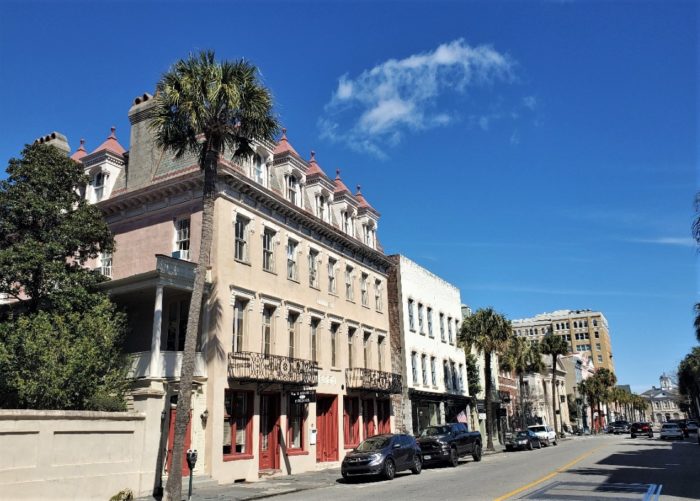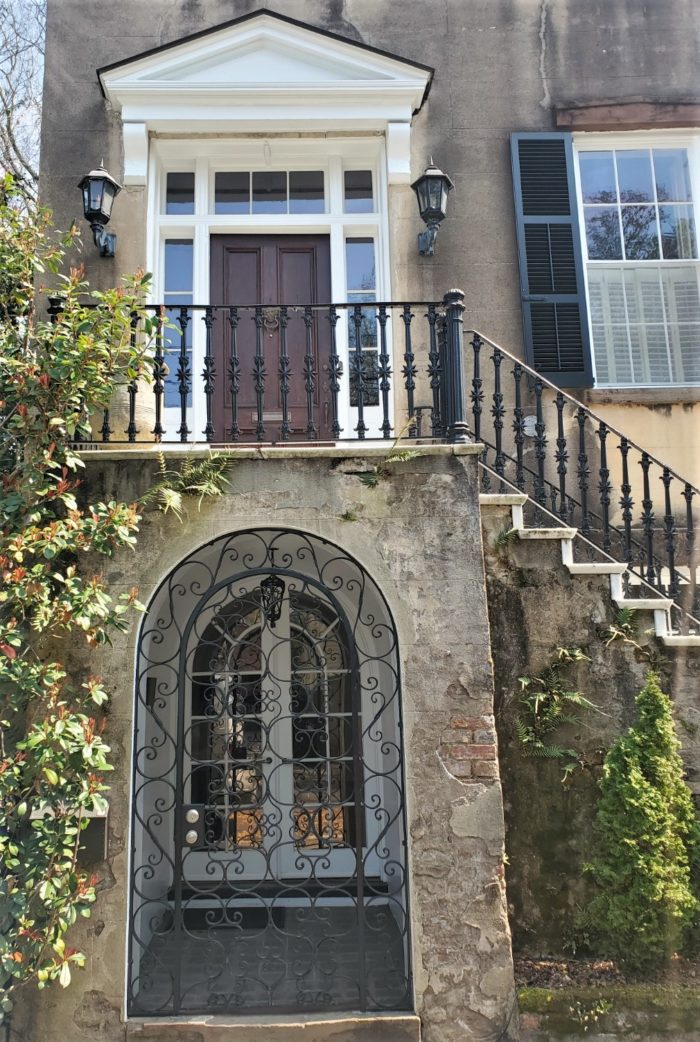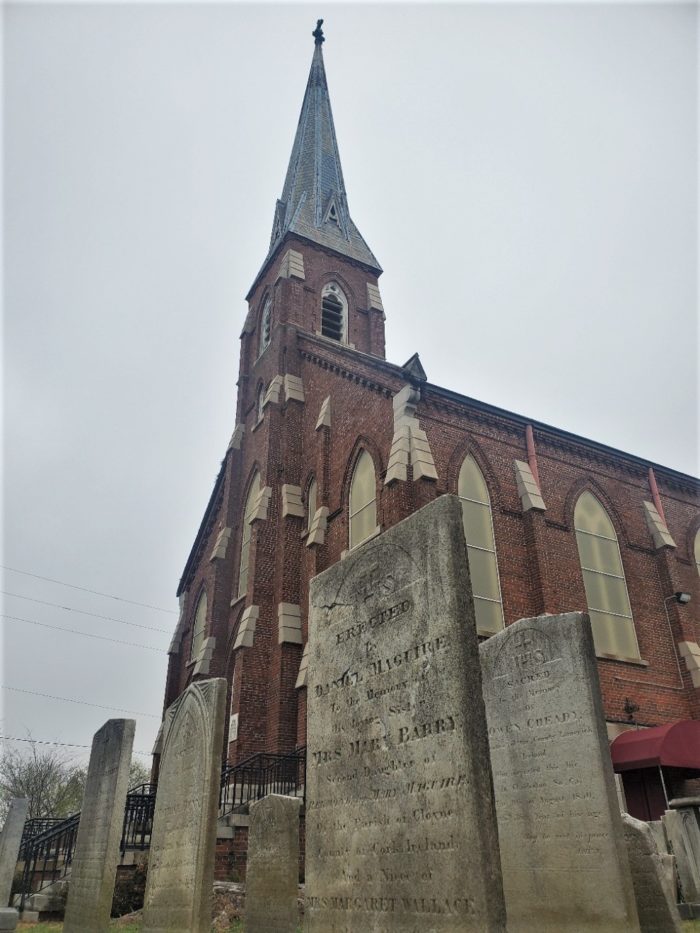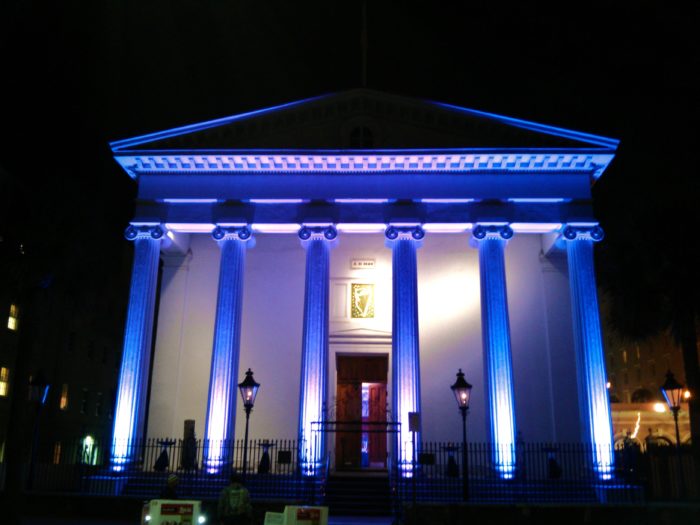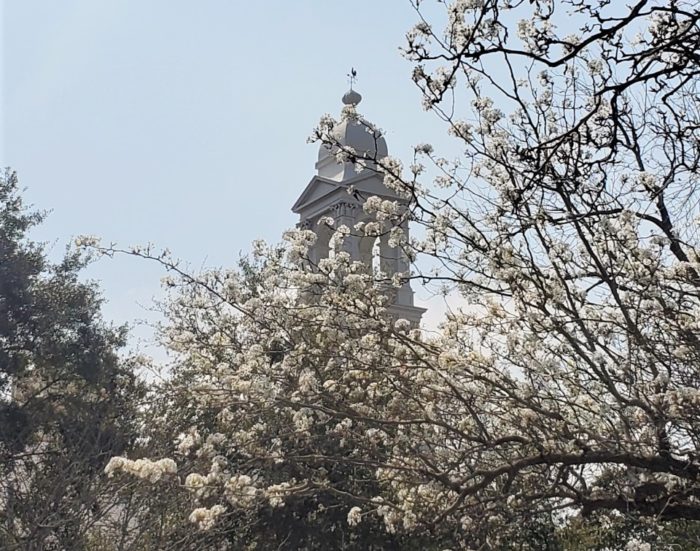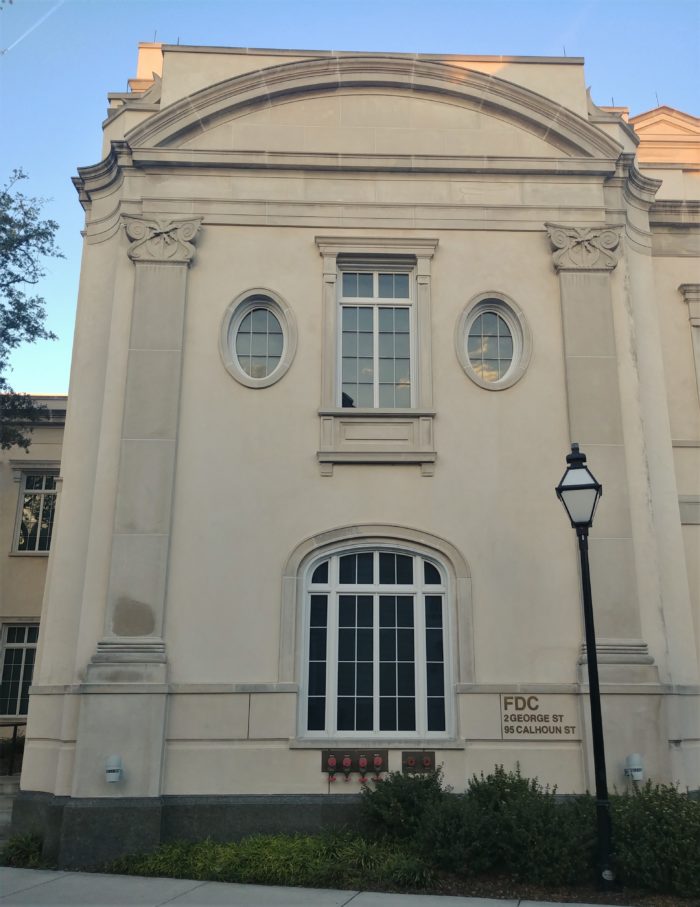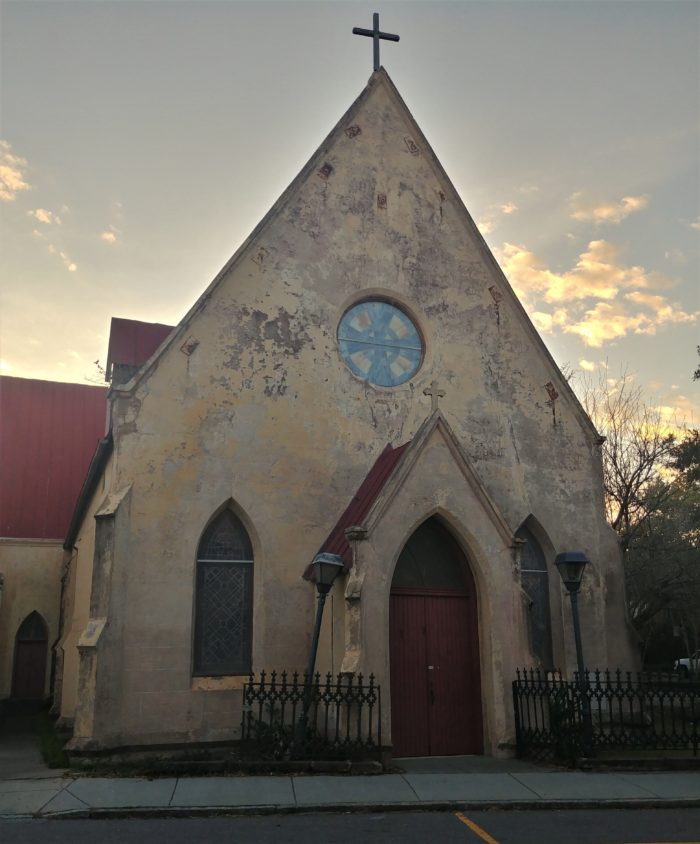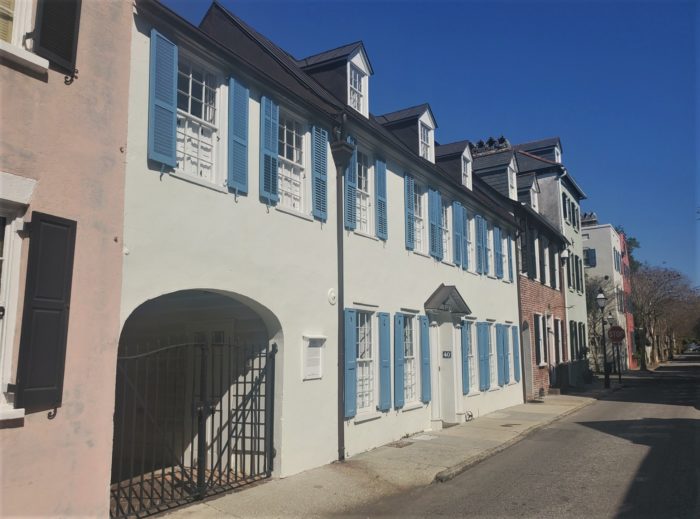The Confederate Home a/k/a Home for Mothers, Widows and Daughters of Confederate Soldiers of Charleston (in the foreground on Broad Street) was built c. 1800. It required some substantial repairs following the earthquake of 1886. It was during those repairs that the pressed metal dormers and the slate roof were added.
The Frost House
These entries are to the Frost House, on Logan Street. Built circa 1852, it survived the great fire of 1861 and later became the home of Susan Pringle Frost — the founder of the Preservation Society and a leading suffragist, among other things.
St. Patrick’s
St. Patrick’s Church on St. Patrick’s Day. One of the many steeples that makes up the skyline of the Holy City.
Luck of the Irish
Hibernian Hall was built by the Hibernian Society of Charleston, an Irish benevolent society, in 1840. On the National Register of Historic Places, it’s well known for its use during the 1860 Democratic National Convention (and being the only one still in existence), its iron gates made by master artisan Christopher Werner and hosting many, many St. Patrick’s Day celebrations.
Monochromatic
The brand new Bradford Pear blossoms surround the steeple of St. John’s Lutheran Church on Clifford Street. The church is the “mother” for all Lutheran churches in Charleston and South Carolina, with its congregation dating back to 1742. This building was built between 1816 and 1818.
Lamboll
Lamboll Street is full of all sorts of beauty — from the blooming “tulip tree” to the double porch house (c.1914) to much older neighboring houses.
March is Springing
Some beautiful March blossoms in Charleston. This scene is on Church Street, across from the First Baptist Church.
Oh Nooooo!
This rather upset looking building is part of the Gaillard Center. You can find faces in it in many places.
An Anson Beauty
St. John’s Reformed Episcopal Church on Anson Street (c. 1850) has a very interesting history — including being heavily damaged during the siege of Charleston in the Civil War. In 1991 a commemorative garden was created honoring Philip Simmons — the extraordinary blacksmith.
1718 Tradd
Built in 1718, this beautiful house on Tradd Street was within the original walled city of Charles Towne. The wall was built to protect the settlement from invasion by Spaniards, among others.
- « Previous Page
- 1
- …
- 32
- 33
- 34
- 35
- 36
- …
- 188
- Next Page »
